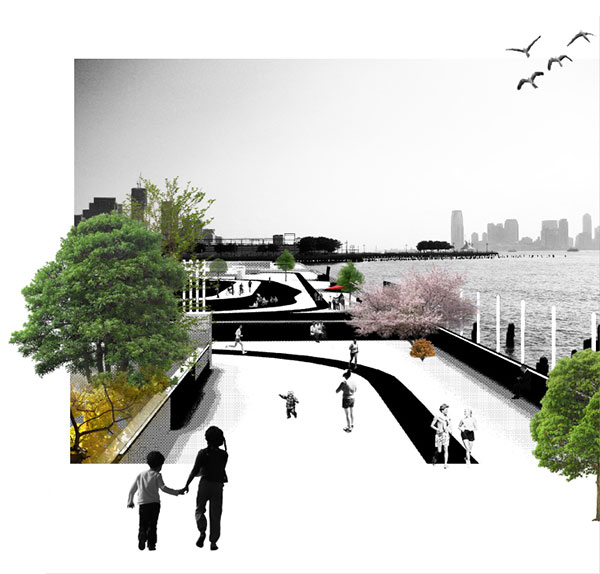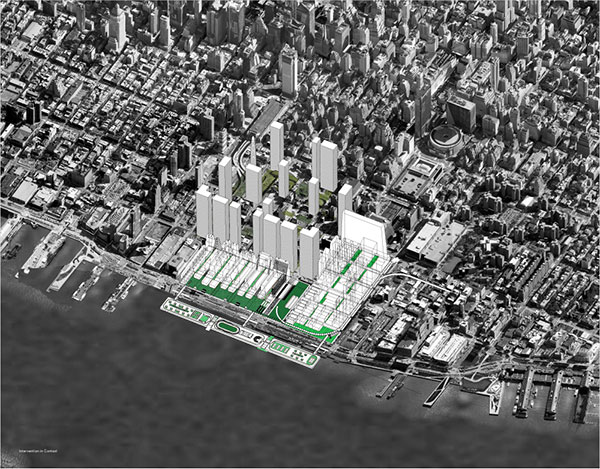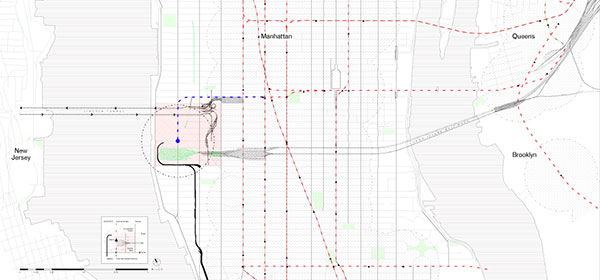Gridding Midtown West: Mediating Global and Local Forces

by Jack Becker (MAUD ’13)
The agenda of the studio was to draw from the history and logic of the Manhattan Grid in addressing New York’s future dealings with urban phenomena and growth. I chose the contentious region in Midtown West known as “Hudson Yards” as a test-bed for what the future grid might look like. The terminus of the Highline, the future site of an extended metro line, the Westside Highway, the entrance and exit of the Lincoln Tunnel, the busiest bus station in the country, and a recent up-zoning and the sale of Hudson Yards’ air-rights came together to produce a context teeming with both potentials and violent juxtapositions.
Taking as a point of departure Andrew Cuomo’s expressed intention to relocate the existing Javits Convention Center to Queens and re-repurpose those five west side blocks in the mold of Battery Park City, my project sought an alternative to the public-private models embedded in the aspirations of both Cuomo and the Related Group (Hudson Yards) by making use of the isotropic, continuous grid as a means to 1) combat enclave urbanism as well as 2) heighten in a context richly variegated by the above-mentioned qualities (geography, infrastructure, program, density, etc.) of local difference and character. Thus, the intention of the project was to use the grid in concert with a mixture of zoning mechanisms to better balance local and global interests.

